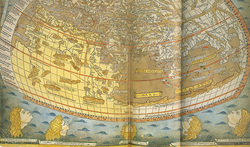
Being Human
A is for anthropomorphism, isn't it? We've been illustrating animals, plants, inanimate objects and ideas in our own image for tens of thousands of years . . . in order to explain their relationship to other things and ourselves, to teach and to sell.
Image is a fifteenth century map from Images of Science by Brian J. Ford.
A is for anthropomorphism, isn't it? We've been illustrating animals, plants, inanimate objects and ideas in our own image for tens of thousands of years . . . in order to explain their relationship to other things and ourselves, to teach and to sell.
Image is a fifteenth century map from Images of Science by Brian J. Ford.
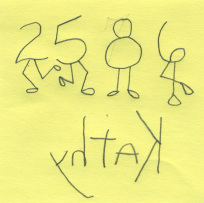
Early attempts
To make letters and numbers more interesting (or so I thought) I drew legs and feet for them and imagined them moving around on the page. My teacher was not as excited by this idea as I was. She was worried that I was not taking the job of learning seriously. Those ambulating numbers were just the beginning- after all it was only first grade and there was more to come.
Image is a recreation of the author's first grade mirror writing and embellished numerals.
To make letters and numbers more interesting (or so I thought) I drew legs and feet for them and imagined them moving around on the page. My teacher was not as excited by this idea as I was. She was worried that I was not taking the job of learning seriously. Those ambulating numbers were just the beginning- after all it was only first grade and there was more to come.
Image is a recreation of the author's first grade mirror writing and embellished numerals.
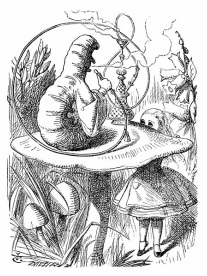
Lewis Carroll and Can o´ Beans
Poring over the illustrations in Alice's Adventures in Wonderland, watching animated Disney films and reading comics led me to the notion that the idea of things having human qualities might not be all that unusual. I found out I'm not alone in this line of thinking. Imagining inanimate objects being able to walk around, talk, be conscious and effect change was a theme in Tom Robbins' Skinny Legs and All. There are other advocates, but Mr. Robbins writing is right up my alley.
Image is by Sir John Tenniel for Lewis Carroll's Alice's Adventures in Wonderland, 1866.
Poring over the illustrations in Alice's Adventures in Wonderland, watching animated Disney films and reading comics led me to the notion that the idea of things having human qualities might not be all that unusual. I found out I'm not alone in this line of thinking. Imagining inanimate objects being able to walk around, talk, be conscious and effect change was a theme in Tom Robbins' Skinny Legs and All. There are other advocates, but Mr. Robbins writing is right up my alley.
Image is by Sir John Tenniel for Lewis Carroll's Alice's Adventures in Wonderland, 1866.
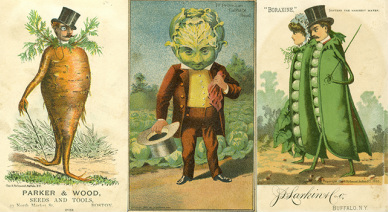
Finding Inspiration
The seed packet is particularly suited to illustration, and is frequently found to have a personification of the plant-to-be on the exterior. I love the absolute whimsy of the cabbage-head image, two peas in a pod and the gentleman yam.
Images are seed packet illustrations and an advertising card, late 1800's, early 1900's.
The seed packet is particularly suited to illustration, and is frequently found to have a personification of the plant-to-be on the exterior. I love the absolute whimsy of the cabbage-head image, two peas in a pod and the gentleman yam.
Images are seed packet illustrations and an advertising card, late 1800's, early 1900's.
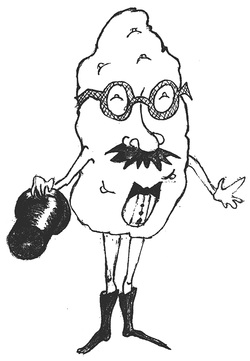
Le cirque des legumes
The seed packets have proven to be inspirational. I'm currently working on drawings for a hand-painted ceramic tile piece that will be a circus made up entirely of anthropomorphized vegetable performers. The ringmaster will be a potato, there's a beet as a high-wire walker. The circus band consists of a piece of celery, a tomato, an ear of corn and a carrot. A green pepper is a juggler.
Image is original drawing by Kathleen C. Howard.
The seed packets have proven to be inspirational. I'm currently working on drawings for a hand-painted ceramic tile piece that will be a circus made up entirely of anthropomorphized vegetable performers. The ringmaster will be a potato, there's a beet as a high-wire walker. The circus band consists of a piece of celery, a tomato, an ear of corn and a carrot. A green pepper is a juggler.
Image is original drawing by Kathleen C. Howard.
 RSS Feed
RSS Feed